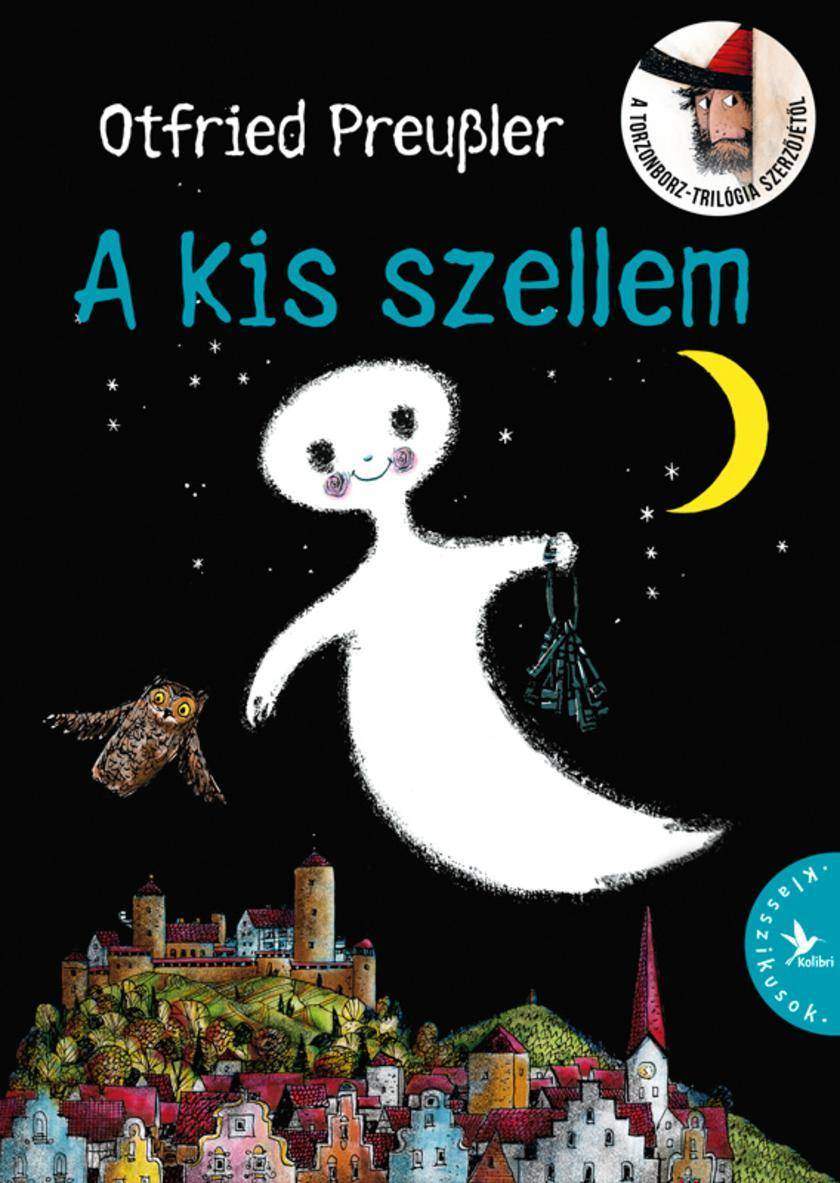
A kis szellem
¥58.78
Defoe's novel Robinson Crusoe (1719) tells of a man's shipwreck on a deserted island and his subsequent adventures. The author based part of his narrative on the story of the Scottish castaway Alexander Selkirk, who spent four years stranded on the island of Juan Fernandez. He may have also been inspired by the Latin or English translation of a book by the Andalusian-Arab Muslim polymath Ibn Tufail, who was known as "Abubacer" in Europe. The Latin edition of the book was entitled Philosophus Autodidactus and it was an earlier novel that is also set on a deserted island. "One day, about noon, going towards my boat, I was exceedingly surprised with the print of a man's naked foot on the shore, which was very plain to be seen on the sand."— Defoe's Robinson Crusoe, 1719 The novel has been variously read as an allegory for the development of civilisation, as a manifesto of economic individualism and as an expression of European colonial desires but it also shows the importance of repentance and illustrates the strength of Defoe's religious convictions. It is also considered by many to be the first novel written in English. Early critics, such as Robert Louis Stevenson admired it saying that the footprint scene in Crusoe was one of the four greatest in English literature and most unforgettable; more prosaically, Dr. Wesley Vernon has seen the origins of forensic podiatry in this episode. It has inspired a new genre, the Robinsonade as works like Johann David Wyss's The Swiss Family Robinson (1812) adapt its premise and has provoked modern postcolonial responses, including J. M. Coetzee's Foe (1986) and Michel Tournier's Vendredi ou les Limbes du Pacifique (in English, Friday, or, The Other Island) (1967). Two sequels followed, Defoe's The Farther Adventures of Robinson Crusoe (1719) and his Serious reflections during the life and surprising adventures of Robinson Crusoe: with his Vision of the angelick world (1720). Jonathan Swift's Gulliver's Travels (1726) in part parodies Defoe's adventure novel. ? About Author: Daniel Defoe (1660 – 24 April 1731), born Daniel Foe, was an English trader, writer, journalist, pamphleteer, and spy, now most famous for his novel Robinson Crusoe. Defoe is notable for being one of the earliest proponents of the novel, as he helped to popularise the form in Britain, and, along with others such as Samuel Richardson, is among the founders of the English novel. A prolific and versatile writer, he wrote more than 500 books, pamphlets and journals on various topics (including politics, crime, religion, marriage, psychology and the supernatural). He was also a pioneer of economic journalism. ? Early lifeDaniel Foe (his original name) was probably born in the parish of St. Giles Cripplegate, London. Defoe later added the aristocratic-sounding "De" to his name and on occasion claimed descent from the family of De Beau Faux. His birthdate and birthplace are uncertain: sources offer dates of anywhere between 1659 to 1662; considered most likely to be 1660. His father, James Foe, was a prosperous tallow chandler and a member of the Butchers' Company. In Defoe's early life he experienced firsthand some of the most unusual occurrences in English history: in 1665, 70,000 were killed by the Great Plague of London and the Great Fire of London (1666) left standing only Defoe's and two other houses in his neighborhood. In 1667, when he was probably about 7, Dutch fleet sailed up the Medway via the River Thames and attacked Chatham. His mother Annie had died by the time he was about 10.

Укра?нська легко! (Ukra?ns'ka legko!)
¥26.65
Н?л Фер?юсон зауважу?: ?Ще на початку XV стол?ття сама лише думка про те, що наступн? п’ять стол?ть Зах?д буде дом?нувати над рештою св?ту, здалася б дуже дивною. А вт?м, це сталося?. ? нин? могутн?сть Заходу вража? нав?ть найбагатшу уяву... То чому ж так трапилося? Чому ?вропа, що на 1500-й р?к поступалася Сходу за багатьма показниками — економ?чними, технолог?чними, демограф?чними, — зум?ла р?зко рвонути уперед ? досягти безперечного св?тового панування? Як? складов? усп?ху зах?дно? цив?л?зац??? Саме ц? дражлив? питання украй см?ливо, часом нав?ть зухвало, а проте надзвичайно захопливо висв?тлю? Н?л Фер?юсон.

Украшаем выпечку масляным кремомм
¥17.74
Tomasz Stawiszyński, filozof, publicysta zwi?zany mi?dzy innymi z ?Newsweekiem”, odwa?nie wylicza psychoterapeutyczne mity i pi?tnuje wielbion? bezkrytycznie psychologi?. Przekonuje, ?e wspó?czesna kultura i psychoterapia promuj? idea? cz?owieka, którego nie sposób zrealizowa? w praktyce. Tymczasem zdrady, depresja i chaos nie s? czym?, co trzeba zawsze pot?pia? i eliminowa?. Przeciwnie, odpowiednio zrozumiane czyni? ?ycie g??bszym i prawdziwszym, cho? niekoniecznie ?atwiejszym. A ?atwo?? ?ycia – któr? obiecuj? dzisiaj ró?ni terapeuci albo coachowie – to kolejny mit, bo d??enie do niej wzmacnia tylko problemy, jakich odruchowo chcemy si? pozby?. Ta fascynuj?ca ksi??ka przygl?da si? podejrzliwie zmitologizowanym prawdom psychologicznym, które przez ostatnie dekady dobrze nakr?ci?y nam w g?owie i zrobi?y wod? z mózgu. Tomasz Stawiszyński, filozof z talentem felietonisty, nie tylko ratuje nasz zdrowy rozs?dek, lecz tak?e prowadzi w kierunku szerszego, bardziej uniwersalnego rozumienia psychologii cz?owieka w uj?ciu Jamesa Hillmanna jako specyficznej wiedzy o otaczaj?cym nas dziwnym, skomplikowanym i wielopi?trowym ?wiecie. Dla wszystkich, którym nie wystarcza psychologiczna tradycja. Olga Tokarczuk Nie wierzcie – mówi Tomasz Stawiszyński – w sprowadzenie na ?wiat ?cz?owieka idealnego“. Nie wierzcie zw?aszcza wtedy, gdy wmawiaj? wam zewsz?d, ?e to wy nim mo?ecie zosta?, ?e macie w sobie tak? moc. A tymczasem to ideologiczna zmora, to potwór, który czyha na wasz? wolno??. prof. Zbigniew Miko?ejko, filozof religii, Instytut Filozofii i Socjologii PAN

Shirzan szerelme: ?gyas és úrn? 1.
¥58.29
Подарунок шанувальникам! Чотири уславлен? твори: ?Рита Гейворт ? втеча з Шоушенку?, ?Зд?бний учень?, ?Т?ло?, ?Метод дихання?! Podarunok shanuval'nikam! Chotiri uslavlen? tvori: ?Rita Gejvort ? vtecha z Shoushenku?, ?Zd?bnij uchen'?, ?T?lo?, ?Metod dihannja?!
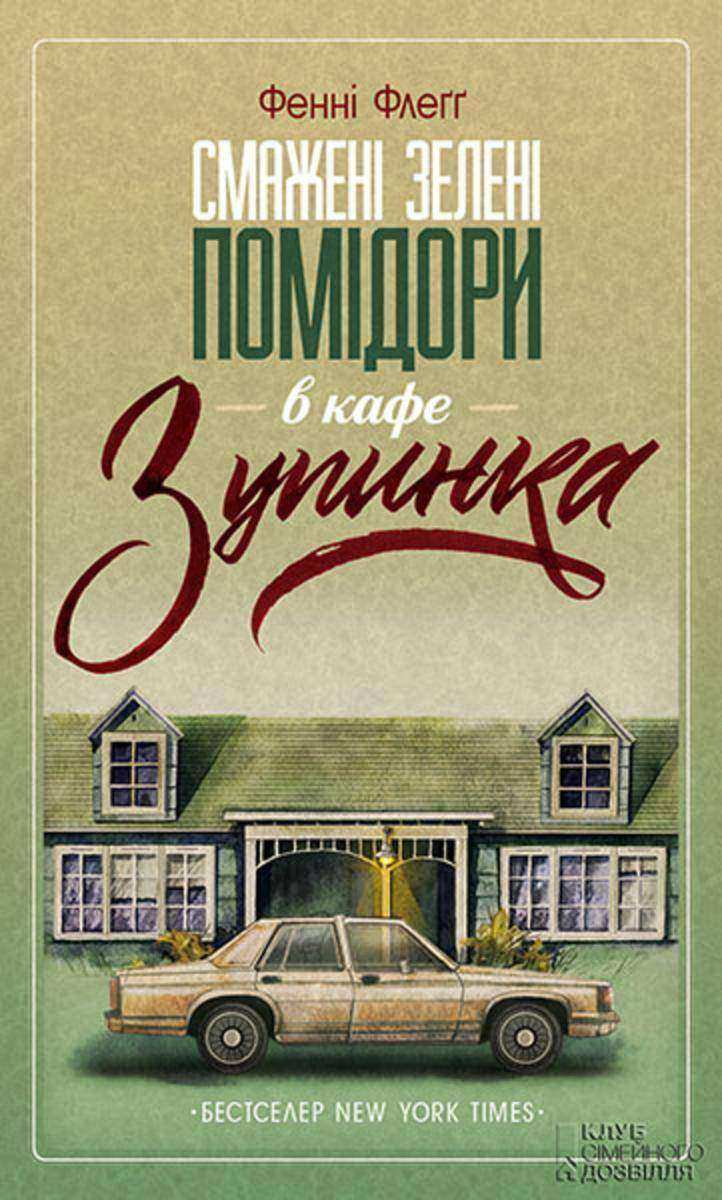
Смажен? зелен? пом?дори в кафе "Зупинка"
¥17.99
Malaria Андрея М. Мелехова – это необычный приключенческий роман о прошлом, настоящем и будущем. Читая его, мы становимся свидетелями последних месяцев существования СССР. Последний съезд КПСС, последний футбольный чемпион умирающей империи, первые ростки капитализма и начало раскола советского народа по национальному признаку. Война в Ираке и конфликт в Нагорном Карабахе. Несколько сот советских военных советников, специалистов и переводчиков, занесённых в раздираемую гражданской войной Анголу, служат, спекулируют, рассуждают о судьбе страны, любят женщин, торгуют запчастями от истребителей и иногда становятся героями. Планируют операции против партизан УНИТА, попадают в засады и чудом спасаются из сбитых вертолётов. Они с тоской читают советские газеты месячной давности и болеют малярией. Главный герой романа – юный офицер-переводчик, закончивший первый курс Военного института. Честный, справедливый и пока во многом наивный юноша. Волею судьбы восемнадцатилетний парень становится участником событий, призванных изменить судьбы мира на десятилетия вперёд. Как это ни странно, лишь в малярийном бреду ему открывается загадочная связь между далёким прошлым и далёким будущим...

A hallgatás mérge
¥58.29
Вражаюча ?стор?я, яку розпов?да?... Смерть! До влади в Н?меччин? прийшли фашисти. Вперше Смерть побачив маленьку Л?зель, коли прийшов забрати душу ?? братика. В?н став св?дком того, як д?вчинка вкрала першу книжку, ? зац?кавився ?? долею. В?н приходив до ?? будинку, де, ризикуючи життям, родина переховувала ?врея. В?н слухав, як Л?зель читала книжки п?д час бомбардувань. Смерть завжди був поруч. П?д час останньо? зустр?ч? в?н розкри? крад?йц? книжок свою найб?льшу та?мницю... Vrazhajucha ?stor?ja, jaku rozpov?da?... Smert'! Do vladi v N?mechchin? prijshli fashisti. Vpershe Smert' pobachiv malen'ku L?zel', koli prijshov zabrati dushu ?? bratika. V?n stav sv?dkom togo, jak d?vchinka vkrala pershu knizhku, ? zac?kavivsja ?? doleju. V?n prihodiv do ?? budinku, de, rizikujuchi zhittjam, rodina perehovuvala ?vreja. V?n sluhav, jak L?zel' chitala knizhki p?d chas bombarduvan'. Smert' zavzhdi buv poruch. P?d chas ostann'o? zustr?ch? v?n rozkri? krad?jc? knizhok svoju najb?l'shu ta?mnicju...
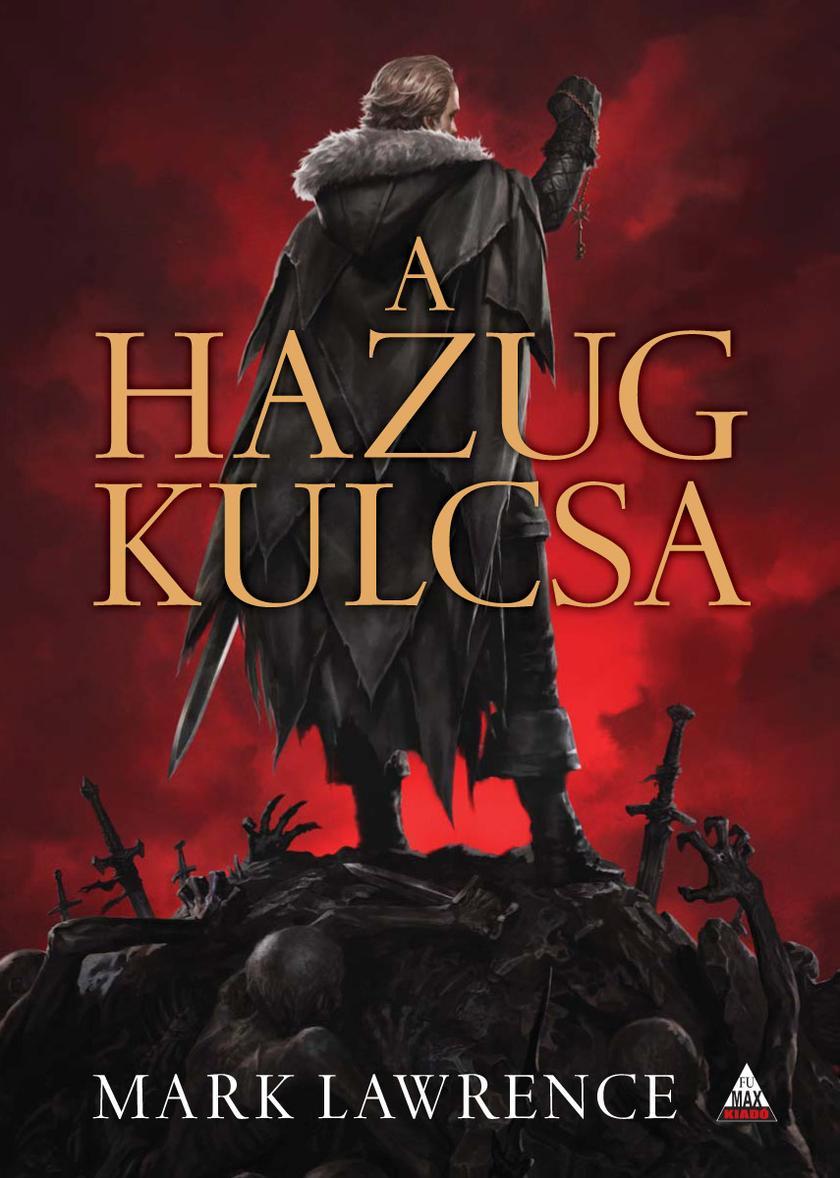
A Hazug kulcsa
¥80.28
A new client arrives to meet Holmes and, after trying to hide his identity for about two seconds, comes clean: he is Wilhelm Gottsreich Sigismond von Ormstein, Grand Duke of Cassel-Felstein and hereditary King of Bohemia (whoa, that's a lot of letters for one name! Bohemia, by the way, is now part of the modern-day Czech Republic). His problem is that he's about to marry the daughter of the King of Scandinavia. The thing is, though, she's from a family with very strict morals, and she wouldn't be pleased to know that he had a serious affair with another woman before their engagement. This woman is Irene Adler – who lives on in Holmes's memory as the woman. She's a singer who met the King in Warsaw, where they subsequently had a bit of a fling. Unfortunately, the King allowed himself to be photographed with Adler, and she has the picture. The King wants Holmes to recover the incriminating photo. Holmes agrees. Holmes then puts on a disguise and goes to Irene Adler's current house in London to stake it out. He finds out that she gets frequent calls from a lawyer, Godfrey Norton. Holmes even happens to be on the site when Adler rushes out of her house to meet Norton at a small church and – get this – our detective is actually called upon (still in disguise) to be the witness for her marriage to the guy. After their surprise elopement, Adler goes back to her house, and Holmes realizes he has to hurry to get the photo back before she has a chance to leave with her new husband.
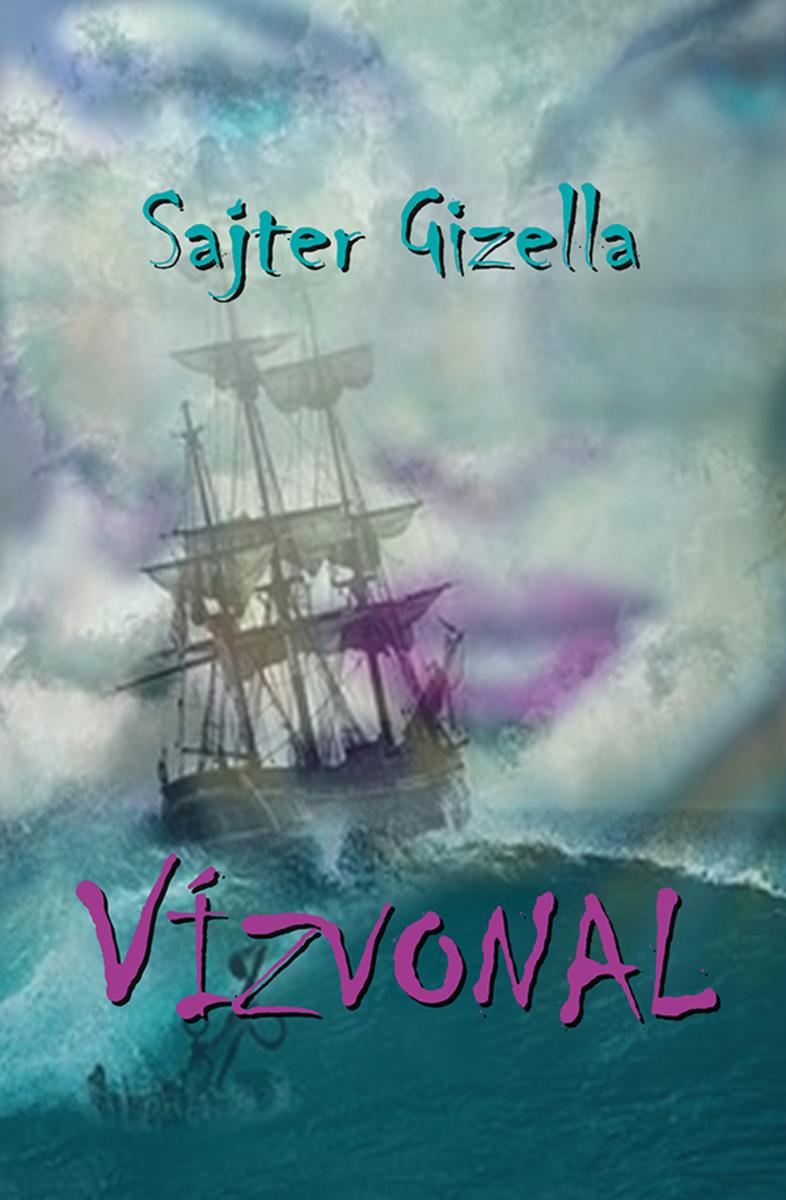
Vízvonal
¥58.29
Он обошел на яхте ?Спрей? вокруг земного шара, оставаясь один на один с морской стихией. On oboshel na jahte ?Sprej? vokrug zemnogo shara, ostavajas' odin na odin s morskoj stihiej.

Father Goriot
¥18.74
In 1861, Henry Dircks, a civil engineer, of London, published a work entitled "Perpetuum Mobile; or, Search for Self-Motive Power, During the Seventeenth, Eighteenth and Nineteenth Centuries." The book contains 599 pages, and was followed in 1870, by a second series by the same author entitled "Perpetuum Mobile, or a History of the Search for Self-Motive Power from the Thirteenth, to the Nineteenth Century." In these two books there is amassed a wonderful amount of material showing on the part of the author diligence, great patience and wide and thorough search.The author of these works was not enamoured of his subject, and his books clearly show that he was not writing them because of any interest he had in the subject of Perpetual Motion. On the contrary, they appear to have been written because of a deep detestation entertained by the author for the subject of Perpetual Motion, and a contemptuous pity for any one seriously interested in the subject. Mr. Dircks's works may be said to be the works of a scold. His sentiments were deep, and his impulses strong, which accounts for the vast amount of labor he did in the preparation of his books. Those books are now out of print, and it is believed by the author of this book that they may well remain so. They contain much material that no one would be justified in wading through. The most complicated mechanisms devised by enthusiastic dreamers are shown in the same detail with which the inventors described them in presenting them to the public, or to the patent offices. Little is to be gained by this. So complicated are many of the devices that only technically trained engineers could read them understandingly, and few technically trained engineers are now greatly interested in self-motive power devices. We believe that every useful or interesting purpose is served if enough devices are collected, classified and presented to show the various principles relied upon by the inventors; with an explanation of why they failed—i. e., wherein the principles relied upon are wrong, and while possibly not out of harmony with any mechanical principles then known, are entirely out of harmony with principles since discovered and now well known. In the preparation of this volume a vast amount of the information furnished by the two works of Mr. Dircks has been rearranged, reclassified, and used.Everyone who has to any extent, by environment, associated with the mass of people who are not technically educated, knows that the persons who are still interested in the subject of Perpetual Motion, and who still seek its attainment, are not technically trained engineers or mathematicians, but for the greater part untrained people of naturally strong mechanical sense, and of natural mechanical and mathematical adaptation.This book is written for the perusal of that large class of people. It is not designed as an argument either for or against the possibility of the attainment of Perpetual Motion. The author is content to classify and present—clearly, it is hoped—the leading endeavors that have been known in that field of effort, and to explain their failure. It is believed by the author that the perusal of the present volume by anyone whose mind has been attracted by the subject of Perpetual Motion will result in an enlightenment, and, it is also believed, will have a tendency to direct his mind from a struggle with theories long ago exploded, and may result in directing his efforts to things practical, and not without hope of attainment.This work is offered only to minds mechanically or mathematically inclined. It is not even hoped that it will interest people who prefer fiction to fact, nor people who read simply for idle entertainment. ABOUT AUTHOR: The author has no apology to offer for the production of this book. He has spent his life in environments that have brought him into constant contact with mechanics, artisans and laborers as well as professional men, engineers, chemists and technical experts of various types. He knows a great many men—young men, for the most part—are constantly working on the old, old problem of Perpetual Motion; that much money, and much time are being spent in search of a solution for that problem which all scientific and technical men tell us is impossible of solution.It is believed by the author that a classification and presentation of selected groups of the devices produced in the past by which it was by the inventor believed, self-motive power had been attained, will save much work in fields already thoroughly exploited.So far as the author knows no book on the subject has appeared since 1870. The various encyclopedias published contain articles on the subject, but they are necessarily brief, and not satisfying to young men who have become interested in the subject.

Торты и пирожные без выпекания. Вкусные десерты без хлопот!
¥17.74
К?лька стол?ть нам нав’язували ?деальний образ людини — комун?кабельно?, харизматично?, енерг?йно?, — мовляв, саме ц? риси — запорука усп?ху. Тому й не дивно, що б?льш?сть переступила через себе, намагаючись в?дпов?дати цьому вз?рцев?. Сьюзен Кейн вважа?, що час скинути маски, ? на численних прикладах з пол?тики, б?знесу, осв?ти, громадського та культурного життя розпов?да?, у чому кри?ться потенц?ал тихих людей. Кейн сама ?нтроверт, тому щиро д?литься порадами, як здобути усп?х на робот? ? в особистому житт?, при цьому залишаючись самим собою.

Королева пустел?: Одна ж?нка здатна зм?нити х?д ?стор??
¥28.29
Un incredibile tornado si abbatte sul Kansas travolgendo la fattoria della piccola Dorothy e trasportandola, insieme con il suo cagnolino Toto, in un paese lontano e sconosciuto. Qui, dopo aver schiacciato la malvagia Strega dell'est, la bambina è accolta come un'eroina dal popolo che la megera teneva in ostaggio. Ma per tornare a casa Dorothy dovrà affrontare mille avventure accompagnata da uno Spaventapasseri, un Taglialegna di Latta e un Leone Vigliacco. Insieme sperano di incontrare il potente Mago di Oz nella splendida città di Smeraldo, l'unico che si dice sarà in grado di aiutarli.
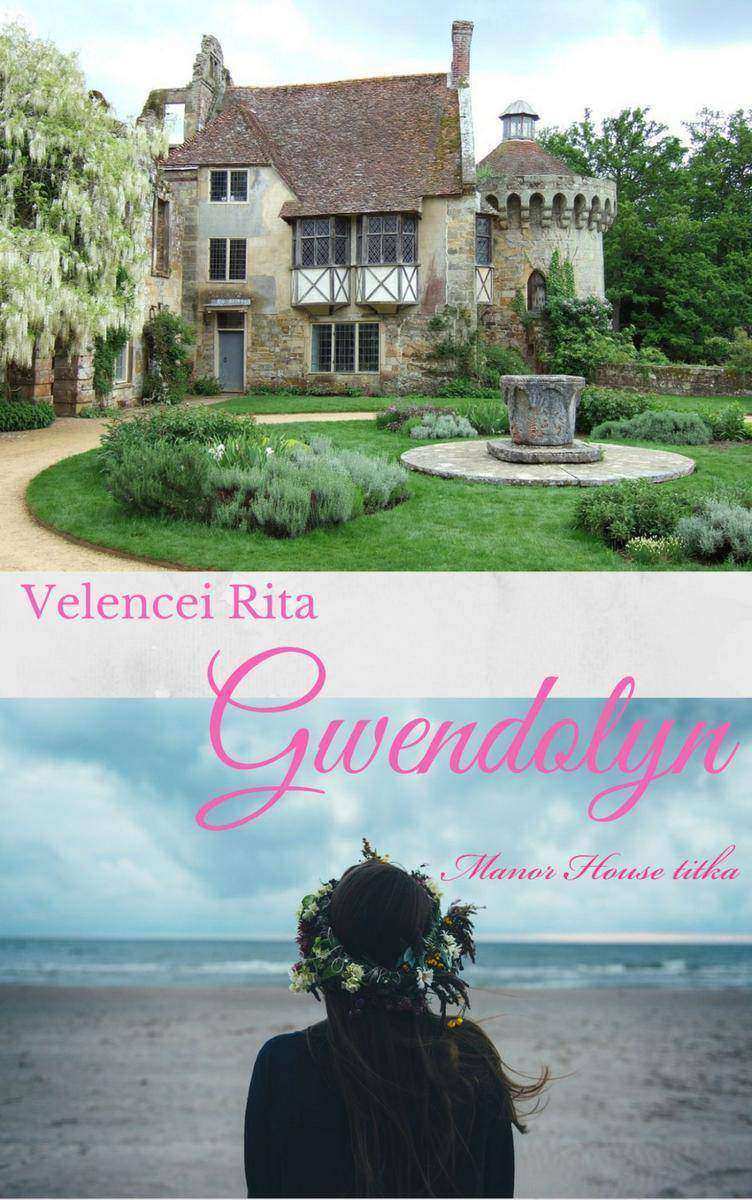
Gwendolyn: Manor House titka
¥23.30
Схемы, иллюстрации и инструкции помогут без труда справиться с работой. ? Красивые и надежные заборы из дерева, металла, сетки-рабицы, кирпича, камня, бетона ? Живые изгороди и др. Shemy, illjustracii i instrukcii pomogut bez truda spravit'sja s rabotoj. ? Krasivye i nadezhnye zabory iz dereva, metalla, setki-rabicy, kirpicha, kamnja, betona ? Zhivye izgorodi i dr.
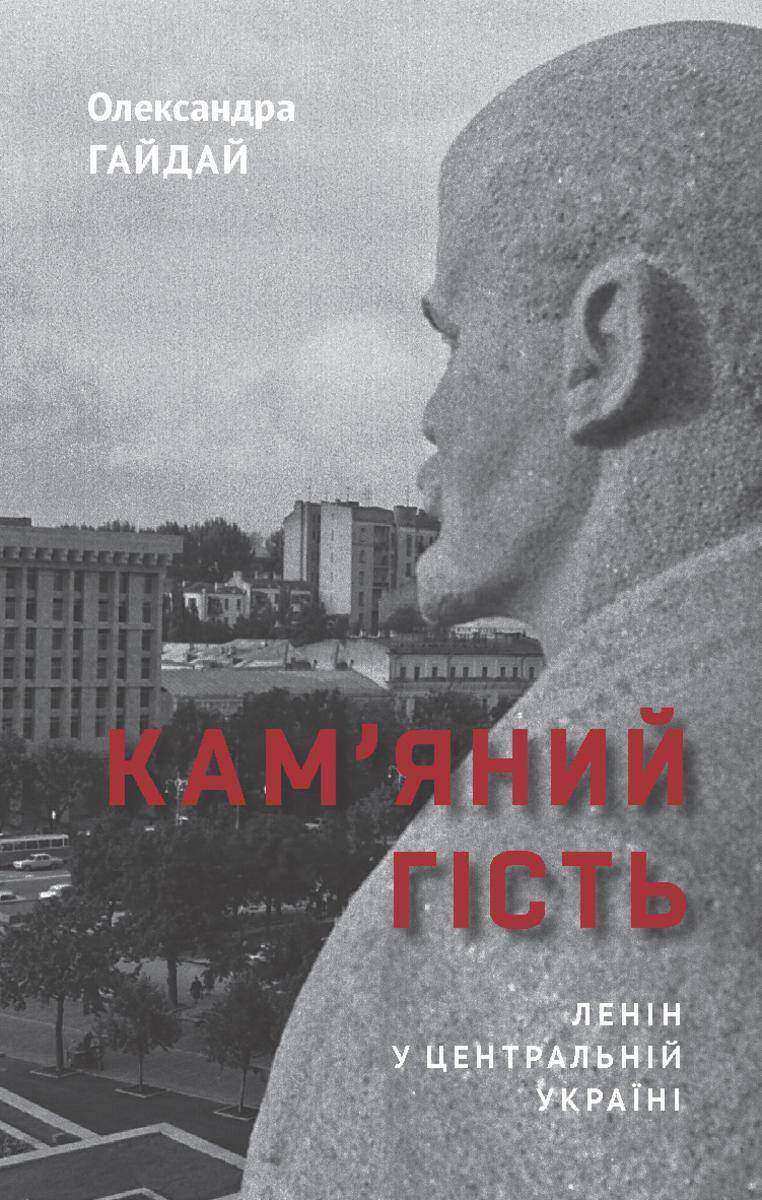
Кам’яний г?сть. Лен?н у Центральн?й Укра?н?
¥17.58
O livro apresenta uma abordagem sobre como foram construídos os saberes inerentes à medicina e ao hospital na Sociedade Moderna. Mostra, historicamente, como foi estabelecido o poder e as práticas médico-hospitalares. A obra apresenta o discurso das institui??es dominantes sobre o modelo assistencial, como também revela a realidade pragmática do acesso efetivo ao direito social à saúde, que, formalmente, foi expresso como uma necessidade básica traduzida em mínimos sociais, como condi??o legítima de dignidade da pessoa humana. A relev?ncia desse estudo é em virtude de sua especial significa??o nas diversas áreas das Ciências Humanas e Sociais, ao nutrir o debate sobre a temática do Direito à Saúde nas inst?ncias do Poder Público, bem como ao introduzi-la na agenda das profiss?es relacionadas com o campo da saúde, aprofundando suas dimens?es de transdisciplinariedade e transversalidade.

Gulliver's Travels
¥28.04
Fear cut through the unconscious mind of Wilbur Hawkes. With almost physical violence, it tightened his throat and knifed at his heart. It darted into his numbed brain, screaming at him. He was a soft egg in a vast globe of elastic gelatine. Two creatures swam menacingly through the resisting globe toward him. The gelatine fought against them, but they came on. One was near, and made a mystic pass. He screamed at it, and the gelatine grew stronger, throwing them back and away. Suddenly, the creatures drew back. A door opened, and they were gone. But he couldn't let them go. If they escaped.... Hawkes jerked upright in his bed, gasping out a hoarse cry, and the sound of his own voice completed the awakening. He opened his eyes to a murky darkness that was barely relieved by the little night-light. For a second, the nightmare was so strong on his mind that he seemed to see two shadows beyond the door, rushing down the steps. He fought off the illusion, and with straining senses jerked his head around the room. There was nothing there. Sweat was beading his forehead, and he could feel his pulse racing. He had to get out—had to leave—at once!He forced the idea aside. There was something cloudy in his mind, but he made reason take over and shove away some of the heavy fear. His fingers found a cigarette and lighted it automatically. The first familiar breath of smoke in his lungs helped. He drew in deeply again, while the tiny sounds in the room became meaningful. There was the insistent ticking of a clock and the soft shushing sound of a tape recorder. He stared at the machine, running on fast rewind, and reversed it to play. But the tape seemed to be blank, or erased. He crushed the cigarette out on a table-top where other butts lay in disorder. It looked wrong, and his mind leaped up in sudden frantic fear, before he could calm it again. This time, reason echoed his emotional unease.Hawkes had never smoked before!But his fingers were already lighting another by old habit. His thoughts lurched, seeking for an answer. There was only a vague sense of something missing—a period of time seemed to have passed. It felt like a long period, but he had no memory of it. There had been the final fight with Irma, when he'd gone stalking out of the house, telling her to get a divorce any way she wanted. He'd opened the mail-box and taken out a letter—a letter from a Professor....His mind refused to go further. There was only a complete blank after that. But it had been in midwinter, and now he could make out the faint outlines of full-leafed trees against the sky through the window! Months had gone by—and there was no faintest trace of them in his mind. They'll get you! You can't escape! Hurry, go, GO!...The cigarette fell from his shaking hands, and he was half out of the bed before the rational part of his mind could cut off the fear thoughts. He flipped on the lights, afraid of the dimness. It didn't help. The room was dusty, as if unused for months, and there was a cobweb in one corner by the mirror.His own face shocked him. It was the same lean, sharp-featured face as ever, under the shock of nondescript, sandy hair. His ears still stuck out too much, and his lips were a trifle too thin. It looked no more than his thirty years; but it was a strained face, now—painted with weeks of fatigue, and grayish with fear, sweat-streaked and with nervous tension in every corded tendon of his throat. His somewhat bony, average-height figure shook visibly as he climbed from the bed.Hawkes stood fighting himself, trying to get back in the bed, but it was a losing battle. Something seemed to swing up in the corner of the room, as if a shadow moved. He jerked his head toward it, but there was nothing there. He heard his breath gasping harshly, and his knuckles whitened. There was the taste of blood in the corner of his mouth where he was biting his lips.Get out! They'll be here at once! Leave—GO!

Торты с сюрпризом. Шоколадные, сливочные, кофейные,
¥18.07
Перешкод не уникнути. Вони розчаровують ? парал?зують сучасне сусп?льство. Та год? ?х сприймати негативно, вважа? мед?астратег Раян Гол?дей. Адже кожна перешкода — це можлив?сть перев?рити себе, спробувати щось нове ?, врешт?-решт, вийти переможцем.??Використовуючи принципи сто?к?в, автор допоможе побачити ситуац?ю в ц?лому ? зосередитися на тому, що можна зм?нити. Навчить, як стати емоц?йно ст?йк?шим, знаходити у проблемах можливост? ? виробити ?мун?тет до труднощ?в.??

A pillangó útja
¥58.04
Все советы даются для выращивания винограда в нашем климате! Особое внимание уделяется формированию куста с помощью обрезки, позволяющей регулировать его плодоношение. В книге представлено: ? Описание современных сортов винограда: сроки созревания, урожайность, устойчивость к болезням и др. ? Методы ускоренного формирования винограда ? Размножение и посадка: подготовка участка, укоренение черенков ? Уход за виноградником: полив, удобрение, укрытие на зиму, борьба с заморозками, защита от вредителей ? Прививка различными методами ? Сбор урожая ? Осенняя, весенняя и летняя обрезка: преимущества и способы проведения. Vse sovety dajutsja dlja vyrashhivanija vinograda v nashem klimate! Osoboe vnimanie udeljaetsja formirovaniju kusta s pomoshh'ju obrezki, pozvoljajushhej regulirovat' ego plodonoshenie. V knige predstavleno: ? Opisanie sovremennyh sortov vinograda: sroki sozrevanija, urozhajnost', ustojchivost' k boleznjam i dr. ? Metody uskorennogo formirovanija vinograda ? Razmnozhenie i posadka: podgotovka uchastka, ukorenenie cherenkov ? Uhod za vinogradnikom: poliv, udobrenie, ukrytie na zimu, bor'ba s zamorozkami, zashhita ot vreditelej ? Privivka razlichnymi metodami ? Sbor urozhaja ? Osennjaja, vesennjaja i letnjaja obrezka: preimushhestva i sposoby provedenija.

Shirley
¥8.67
The object of this book, which is addressed to all cultured men and women, is to set forth the primitive manifestations of love and to throw light on those strange emotional climaxes which I have called "Metaphysical Eroticism." I have taken no account of historical detail, except where it served the purpose of proving, explaining and illustrating my subject. Nor have I hesitated to intermingle psychological motives and motives arising from the growth and spread of civilisation. The inevitable result of a one-sided glimpse at historical facts would have been a history of love, an undertaking for which I lack both ability and inclination. On the other hand, had I written a merely psychological treatise, disregarding the succession of periods, I should have laid myself open to the just reproach of giving rein to my imagination instead of dealing with reality. I have availed myself of historical facts to demonstrate that what psychology has shown to be the necessary phases of the evolution of love, have actually existed in historical time and characterised a whole period of civilisation. The history of civilisation is an end in itself only in the chapter entitled "The Birth of Europe." My work is intended to be first and foremost a monograph on the emotional life of the human race. I am prepared to meet rather with rejection than with approval. Neither the historian nor the psychologist will be pleased. Moreover, I am well aware that my standpoint is hopelessly "old-fashioned." To-day nearly all the world is content to look upon the sexual impulse as the source of all erotic emotion and to regard love as nothing more nor less than its most exquisite radiation. My book, on the contrary, endeavours to establish its complete independence of sexuality.My contention that so powerful an emotion as love should have come into existence in historical, not very remote times, will seem very strange; for, all outward profession of faith in evolution notwithstanding, men are still inclined to take the unchangeableness of human nature for granted. The facts on which I have based my arguments are well known, but my deductions are new; it is not for me to decide whether they are right or wrong. In the first (introductory) part I have made use of works already in existence, in addition to Plato and the poets, but the second and third parts are founded almost entirely on original research. ?E. L.
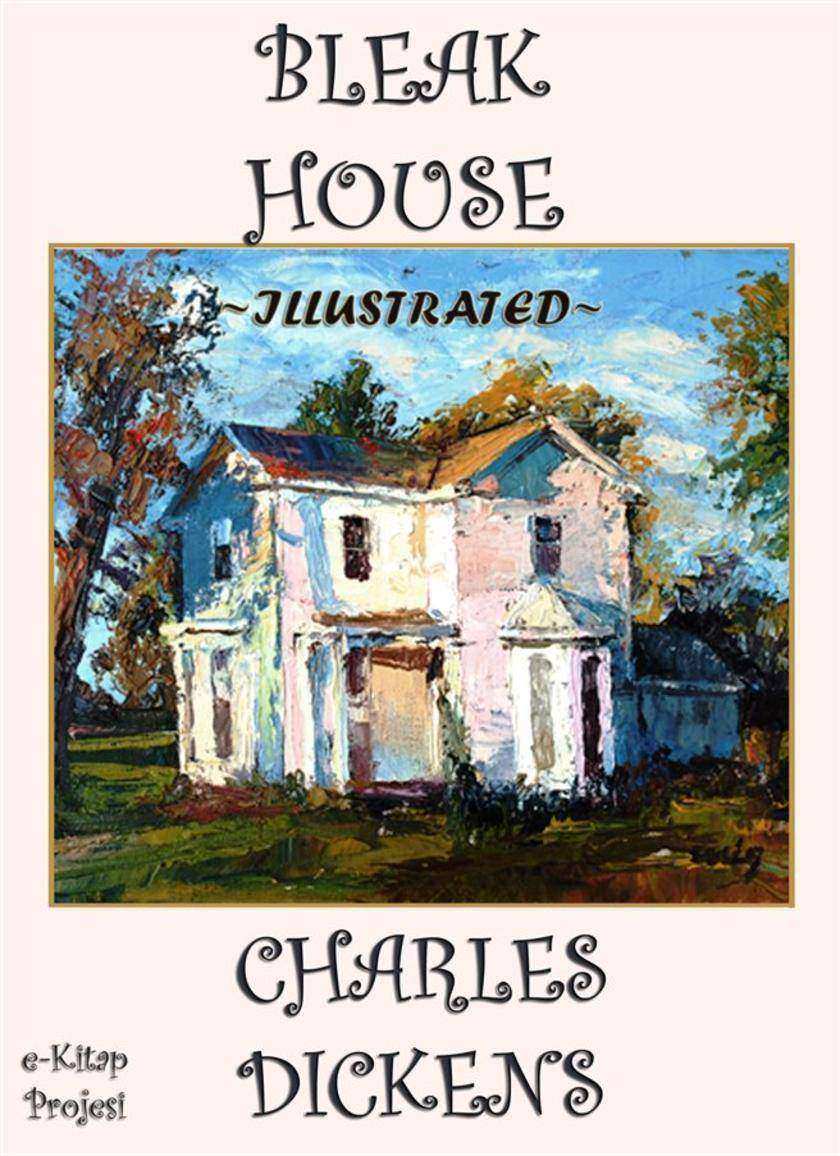
Bleak House: "A Classic from Dickens"
¥32.62
The beautiful scenery of the Moselle has too long been left without notice. It is true, some of our Artists have presented to us scenes on the banks of this river; but English travellers are, for the most part, ignorant how very charming and eminently picturesque are the shores of this lovely stream. “The Rhine! the Rhine!” is quoted by every one, and admired or abused at every fireside, but the Moselle is almost wholly unexplored. Lying, as she does, within a district absolutely overrun with summer-tourists, it is altogether inexplicable that a river presenting scenery unsurpassed in Europe should be so neglected by those who in thousands pass the mouth of her stream. When the Roman Poet Ausonius visited Germany, it was not the Rhine, but the Moselle which most pleased him; and although glorious Italy was his home, yet he could spare time to explore the Moselle, and extol the loveliness of her waters in a most eloquent poem. The Moselle, which rises among the wooded mountains of the Department des Vosges, never during its whole course is otherwise than beautiful. Below Trèves it passes between the Eifel and Hunsruck ranges of mountains, which attain to the height of ten or twelve hundred feet above the level of the river. In the Thirty Years’ War the Moselle country suffered severely from the ravages of the different armies; but there still remain on the shores of this river more old castles and ruins, and more curious old houses, than can elsewhere be found in a like space in Europe. Having in the following pages endeavoured to lay before English readers the interesting scenery of the Moselle, I trust, that although in summer my countrymen do not mount her stream, fearful, perhaps, of discomfort; yet that by the fireside in winter the public will not object to glide down the river, in the boat now ready for them to embark in; and hoping that they will enjoy the reproduction of a tour that afforded me so much pleasure, I subscribe myselfTheir humble servant, ? ? ? ? THE AUTHOR.? ? ? ?Richmond, December 1858. "At a short distance from Bussang, a little town in the Department des Vosges in France, is the source of the Moselle; trickling through the moss and stones that, together with fallen leaves, strew the ground, come the first few drops of this beautiful river. A few yards lower down the hill-side, these drops are received into a little pool of fairy dimensions; this tiny pool of fresh sweet water is surrounded by mossy stones, wild garlic, ferns, little creepers of many forms, and stems of trees. Here, then, O reader, let us pause and contemplate the birth-place of our stream; leaving the world of stern reality, let us plunge together into the grateful spring of sweet romance; and while the only sounds of life that reach our ears are the rustling of the leaves, the buzz of the great flies, the murmur of the Moselle, and the distant ringing of the woodman’s axe, let us return with Memory into the past, and leaving even her behind, go back to those legendary days when spirits purer than ourselves lived and gloried in that beautifully created world which we are daily rendering all unfit for even the ideal habitation of such spirits. And reverie is not idleness; in hours like these we seem to see before us, cleared from the mists of daily cares, the better path through life—the broad straight path, not thorny and difficult, as men are too prone to paint it, but strewed with those flowers and shaded with those trees given by a beneficent Creator to be enjoyed rightly by us earthly pilgrims. Life is a pilgrimage indeed, but not a joyless one. While the whole earth and sky teem with glory and beauty, are we to believe that these things may not be enjoyed? Our conscience answers, No; rightly to enjoy, and rightly to perform our duties, with thankfulness, and praise, and love within our hearts, such is our part to perform, and such the lesson we are taught by the fairy of the sweet Moselle.."
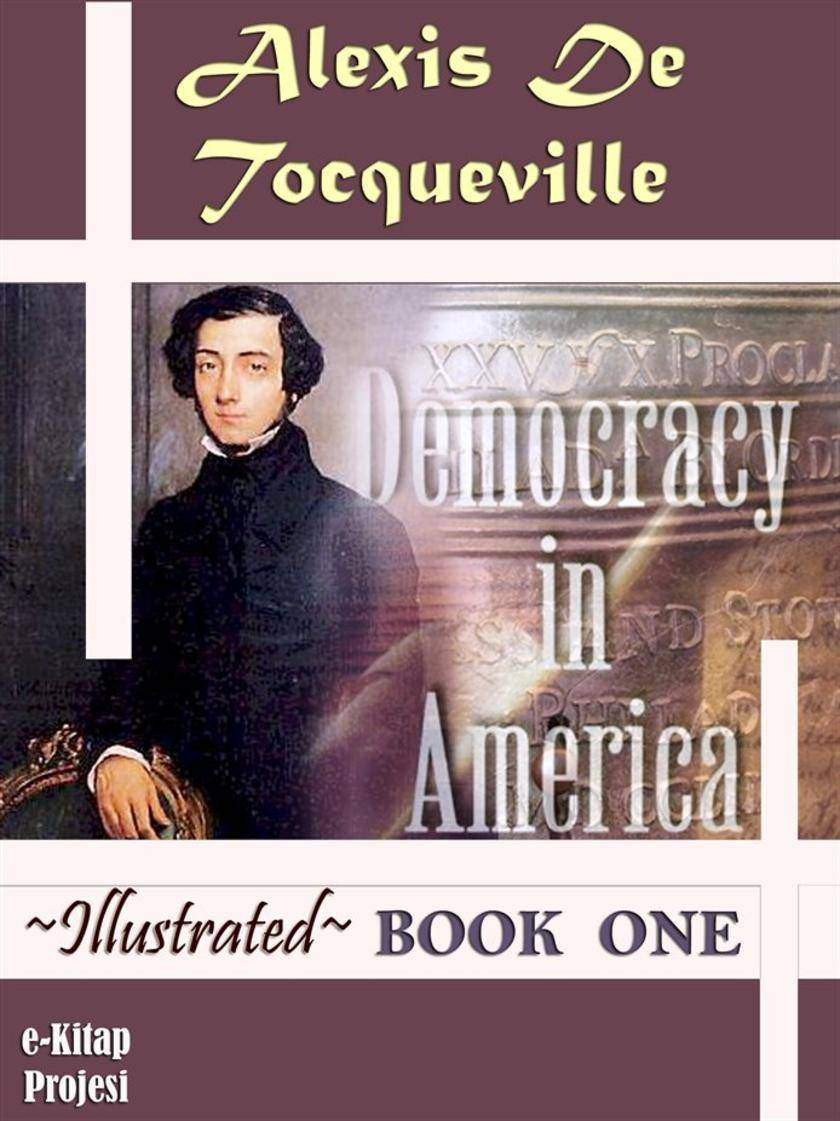
Democracy in America: Book One
¥28.04
A young girl named Fanny Price comes to live with her wealthy uncle and aunt, Sir Thomas and Lady Bertram. Fanny's family is quite poor; her mother, unlike her sister Lady Bertram, married beneath her, and Fanny's father, a sailor, is disabled and drinks heavily. Fanny is abused by her other aunt, Mrs. Norris, a busybody who runs things at Mansfield Park, the Bertrams' estate. The Bertram daughters, Maria and Julia, are shallow, rather cruel girls, intent on marrying well and being fashionable. The elder son, Tom, is a roustabout and a drunk. Fanny finds solace only in the friendship of the younger son, Edmund, who is planning to be a clergyman. Fanny grows up shy and deferential, caught as she typically is between members of the Bertram family. Sir Thomas leaves Mansfield Park for Antigua, where he owns plantations. In his absence, two new figures arrive at Mansfield: Henry and Mary Crawford, the brother and sister of the local minister's wife. Henry and Mary are attractive and cheerful, and they soon become indispensable members of the Mansfield circle. Henry flirts extensively with Maria, who is engaged to marry the boring but wealthy Rushworth. He also flirts with Julia when it suits his purposes. At first, Mary is interested in Tom, the older son and heir, but she soon realizes that he is boring and not really interested in her. She finds herself increasingly attracted to Edmund, although the prospect of marrying a clergyman does not appeal to her, and she is often cruel to him on this account. In the meantime, Fanny has innocently fallen in love with Edmund, although she does not even admit this to herself. Yates, a visiting friend of Tom's, proposes that the group should put on a play. His idea is eagerly received by all except for Edmund and Fanny, who are horrified at the idea of acting. The play goes on anyways, however; Maria and Henry, as well as Mary and Edmund (who has been prevailed upon to take a role to avoid bringing in an outsider to play it), get to play some rather racy scenes with one another. When one of the women cannot make a rehearsal, Fanny is pressured to take a role. She is almost forced to give in when Sir Thomas makes a sudden entrance, having arrived from Antigua. Sir Thomas is unhappy about the play and quickly puts a stop to the improprieties. Since Henry has not declared his love, Maria is married to Rushworth. She and Julia leave Mansfield Park for London. Relationships between the Crawfords and the Bertrams intensify. Edmund nearly proposes to Mary several times, but her condescension and amorality always stop him at the last minute. He confides his feelings to Fanny, who is secretly upset by them. In the meantime, on a lark, Henry has decided to woo Fanny. He is surprised to find himself sincerely in love with her. Fanny has become indispensable as a companion to her aunt and uncle, and on the occasion of her brother William's visit, they give a ball in her honor. Some time after the ball, Henry helps William get a promotion in the Navy. Using this as leverage, he proposes to Fanny, who is mortified and refuses. He continues to pursue her. Her uncle is disappointed that she has refused such a wealthy man, and, as an indirect result, she is sent to stay with her parents in their filthy house. Meanwhile, Edmund has been ordained and continues to debate over his relationship with Mary, to Fanny's dismay. Henry comes to see Fanny at her parents' and renews his suit. He then leaves to take care of business on his estate. Fanny continues to receive letters from Mary encouraging her to take Henry's proposal. A series of events then happen in rapid succession: Tom Bertram falls dangerously ill as a result of his partying and nearly dies; Henry, who has gone not to his estate but to see friends, has run off with the married Maria; Julia, upset over her sister's rash act, elopes with Yates, Tom's friend. Julia and Yates are reconciled to the family. Edmund finally comes and marries Fanny

Jók és rosszak iskolája
¥63.03
Разнообразные салаты и закуски Сочное жаркое и паштеты Наваристые супы Румяные отбивные и котлеты Сытные запеканки и жюльены Пышные пироги и др. Что вкусного и полезного подать на ужин Чем порадовать неожиданных гостей Какой доступный продукт станет основой для массы аппетитных и всевозможных блюд Конечно же курица! Открывайте книгу и убедитесь сами! Нежнейшие отбивные, ароматные котлетки, окорочка гриль с золотистой корочкой, хрустящие наггетсы, аппетитное филе с грибами, овощами и фруктами, куриные запеканки с тающей сырной корочкой, фаршированная курочка с самыми разными начинками! Блюда, приготовленные по рецептам книги, украсят и повседневный, и праздничный стол. Raznoobraznye salaty i zakuski Sochnoe zharkoe i pashtety Navaristye supy Rumjanye otbivnye i kotlety Sytnye zapekanki i zhjul'eny Pyshnye pirogi i dr. Chto vkusnogo i poleznogo podat' na uzhin Chem poradovat' neozhidannyh gostej Kakoj dostupnyj produkt stanet osnovoj dlja massy appetitnyh i vsevozmozhnyh bljud Konechno zhe kurica! Otkryvajte knigu i ubedites' sami! Nezhnejshie otbivnye, aromatnye kotletki, okorochka gril' s zolotistoj korochkoj, hrustjashhie naggetsy, appetitnoe file s gribami, ovoshhami i fruktami, kurinye zapekanki s tajushhej syrnoj korochkoj, farshirovannaja kurochka s samymi raznymi nachinkami! Bljuda, prigotovlennye po receptam knigi, ukrasjat i povsednevnyj, i prazdnichnyj stol.
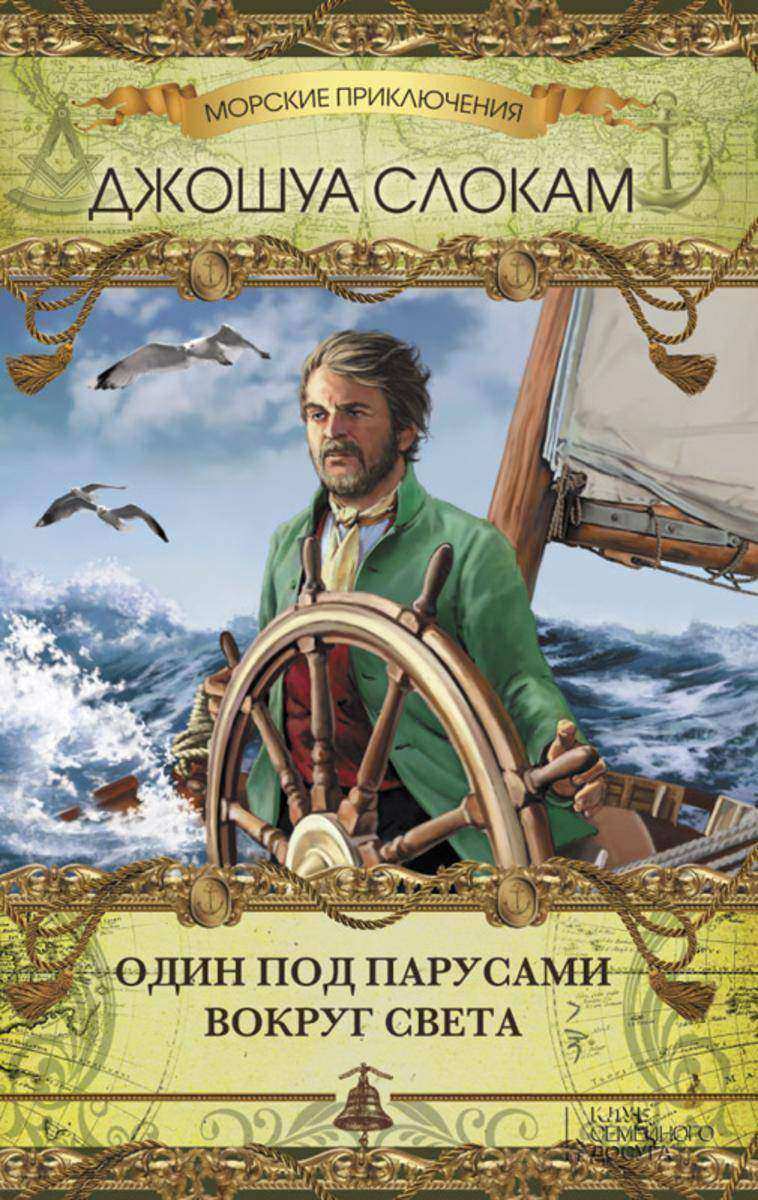
Один под парусами вокруг света, т.10
¥17.74
Mon Agent Андрея М. Мелехова – третий роман об Аналитике. Как и предыдущие книги серии – Malaria и Analyste – Mon Agent представляет из себя необычную комбинацию приключенческого романа и мистического триллера. Он предлагает читателю не только получить удовольствие от весьма неожиданных поворотов нескольких сюжетных линий, но и задуматься над широким кругом философских, религиозных и мировоззренческих проблем, волнующих современного человека.Действие романа происходит в Лондоне и Москве, в Раю и в Преисподней. Его персонажами являются террористы и агенты спецслужб, герои Библии и герои тайных операций, великие пророки прошлого и политики настоящего, ангелы Божьи и слуги Сатаны, люди и говорящие животные. В произведении нашлось место большой любви и большой ненависти, острой политической сатире и тонкому юмору. Как и все книги Мелехова, Mon Agent написан для тех, кто способен подвергнуть сомнению догмы, стереотипы и предубеждения, кто может рассмеяться, говоря даже о весьма серьёзных вещах. Если вы хотите узнать, чем простые (и непростые!) смертные смогли помочь вдруг начавшим стареть и умирать обитателям Рая и как отнеслись бы сегодня люди к новому пришествию Христа – эта книга для вас, читатель! Вам предлагается новая редакция романа.




 购物车
购物车 个人中心
个人中心



